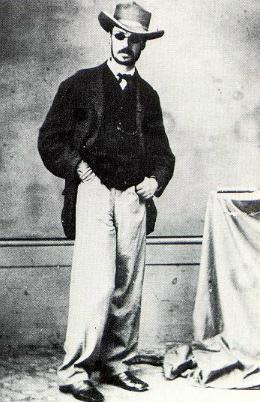From an earlier posting (boundlesslife):
From today's perspective (about twenty years later) there are reasonable ways to foresee what will be very likely to happen once the practice of preserving people at death becomes widespread (after suspended animation is perfected), and these same ways of dealing with the "who will bring us back" enigma can be put to work in how one constructs one's suspension paperwork today.
Suppose for a moment that it's two hundred years from now, and although the odds are against it, there are times when people 'die' in accidents in such a way that the best that can be done is no better than what we call a 'straight freezing' today? What happens to them, at such a time?
Assuming that perfected suspended animation has long been perfected, I think it's extremely reasonable to assume that no matter how poorly, these people will be "saved", the same way that today, the paramedics will almost invariably rush someone to the hospital, even in cases where it looks as if the delay will be so long that there's no chance at all. In that future time, people who are "relatively hopeless" will still be suspended. And it may be well understood at that time how much can be done to "bring them back".
It may not be a total memory loss, but close to it! Perhaps the person once "brought back" will be able to recognize a few pictures, or significant words, but otherwise, it's amnesia, or as close to it as we can imagine, today. And now we come to the important question: "Who's going to pay for it?"
In that future time, it's my opinion that it will be common practice for such people to awaken in an educational setting where they will be reacquainted with their pasts, and with the culture in general. Just as in Thomas Donaldson's great story,
Travelling, they'll "pick up the threads of their lives", although with a great deal more context than the individual depicted in 'Travelling'. And, they'll find that there's a "bill to pay". It will probably be smaller than we now make to pay off a car, but it will be there, and their credit will depend on their paying it, so they'll do that.
Now, suppose there are, at that time, a great many people who were "frozen earlier" (like now, in the early 21st century) under similar circumstances (very compromised). What will be done about them? Who will pay for it? They may have partial memory losses, or perhaps they will be even assessed as having the potential for pretty good memory recovery. We can't say, at this time, can we? But, again, who will pay for it?
My guess, and that's about all you could call it, is that these folks will be "triaged" (sorted out) in terms of how much memory recovery they are expected to experience. And, there will be a further sorting out process (for those who are expected to have good memory recovery) as to how they may react to that future culture, how they may "fit in", and (most particularly) whether they can be expected to easily adjust to the idea that they're going to have to "pay the bill". On that basis, there is likely to be some priority given to those who foresaw this, and said so in a formalized way, before they were suspended.
There's no time to go into all the possibilities in this posting, and a great deal needs to be done about giving cryonics members the necessary tools to make this easy, but a simple start would be to fill out a form with your cryonic society saying something like:
"With the understanding that reanimation costs may range to levels well beyond the capacity of my cryonics organization to pay, and with the anticipation that there will be credit agencies that may be willing to cover reanimation costs, for those who cannot otherwise provide for this, I want my records to show that I have considered this possibility and am open to such an arrangement, to the extent that it is well accepted by all of the major cryonics providers of that day, mine included. I understand that the way resources are held and the way compensation is provided for in future society may be radically different from the way these matters are handled at the time of my suspension, notwithstanding which I am ready to adjust to the practices of the time in which I am reanimated, and do what I am obligated to do in a manner fully in accord with society's accepted ethical practices of that time. I do want to continue my life, however altered society might be, and thus feel that I am an excellent candidate for a program of the kind described above."
This very impromptu example only covers a tiny part of the spectrum of considerations that should be included in such a document The world may have changed to such an extent that one may awaken to find that the average person has abilities we would presently classify as "radically transhuman", and it might be well to state our readiness to accept such changes and adapt to them, or (if not) it might be a good idea to express any reservations we might have about those things. An article on this subject, although over 15 years old, is on-line for those who might be interested
LifePact.
To be continued...
boundlesslife















































